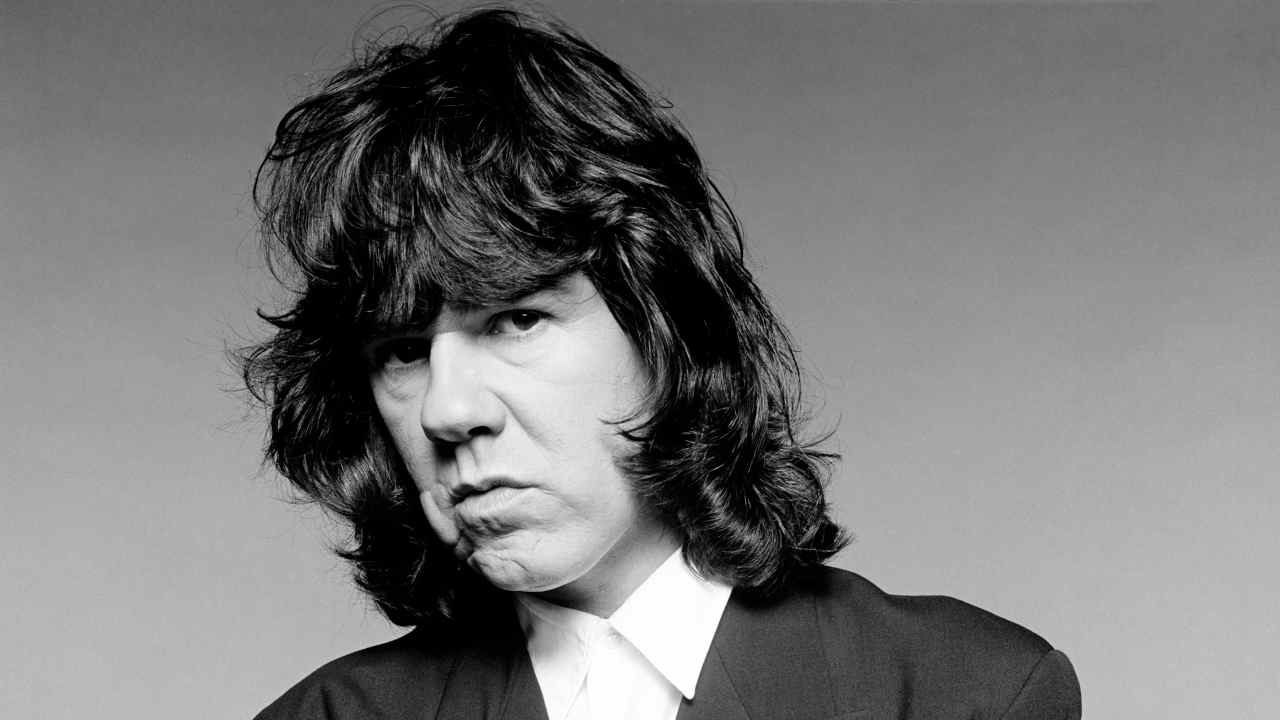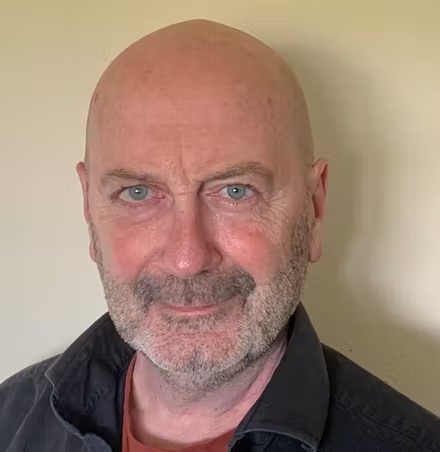It was over 15 years later but the look of disgust on Gary Moore’s face was still there. I was interviewing him around the release of the string of overlooked blues albums he put out during the mid-00s, long after his career had peaked. As we talked, his memory flashed back to the moment in 1989 when he decided, as he put it, “that enough was enough” and it was time to make the album he had always wanted to make.
That record, an unashamed collection of pure blues he called simply Still Got The Blues, became the biggest-selling album of his career, the signature recording he never thought he’d ever get round to creating. Yet somehow he did, just before it was too late.
A year before his unexpected reinvention, Moore had released his eighth solo album, After The War – yet another typical-for-its-times rock and metal workout that kept the fanbase ticking over around Europe, but was his lowest-charting album of the 80s in the UK. That summer also marked the 10th anniversary of his walking out on Thin Lizzy, mid‑US tour, under circumstances so acrimonious none of them would speak to him again for years.
It was, he recalled, time to take stock. He sat at home in Hampstead, going through his record collection, playing a track or two from each of his own albums and wincing as he looked back at a career he now viewed as “like a dog chasing its tail”.
He gave me one his trademark wintery smiles as he recalled the feeling. “I’d just got back from tour and it had gone all right, you know? Good crowds, usual thing. But towards the end I used to look at myself in the dressing room mirror, all dolled up like some guy in Def Leppard, and think to myself: ‘Who do you think you are? You look like a cunt.’”
Back home, listening to a decade’s worth of music that had earned him half a dozen Top 30 albums and a handful of hit singles, he felt disgusted with himself.
“Suddenly I didn’t know who’d made those albums. I didn’t recognise myself in any of them any more. I thought, ‘Fuck it, I’ve got to do something about this.’ But I didn’t know what. Then I picked up my guitar again and this little blues thing just came out all by itself. And I realised that was what happened every time I picked up the guitar. It was always a blues that came first, because that was the music that came naturally to me. I thought, ‘Hmm…’”
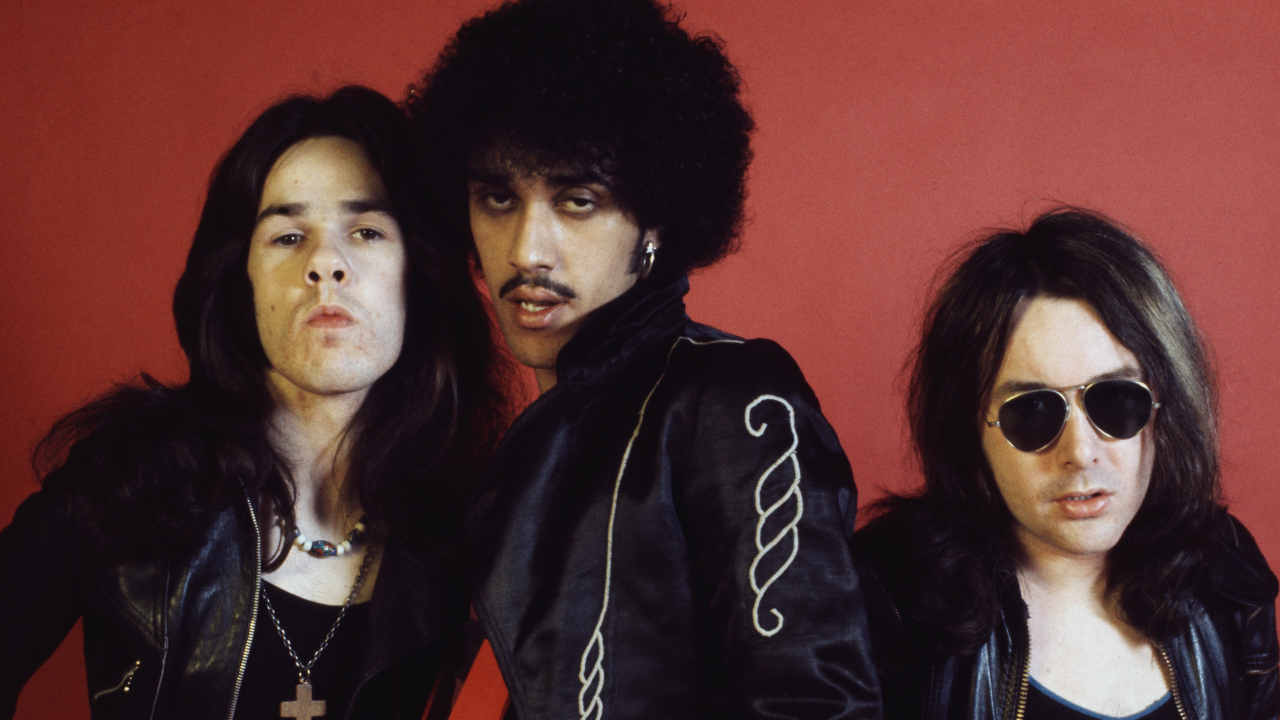
We all did, actually, those of us that had followed his chequered career. Once renowned as the most talented guitarist to come out of Thin Lizzy, back in the 70s the name Gary Moore was one to thrill to. He cut a frenetic figure onstage with Lizzy, the sharp, stabbing edge of Phil Lynott’s romantic gypsy blade.
Even after he left Lizzy – which he did three times in the space of five years – he still drew an audience to him, no matter where he went musically, and he eventually went almost everywhere. A rootless guy – even his speaking voice was a weird blend of Belfast, Dublin and bizarre cockney – the only place he ever felt truly at home, say friends, was the stage.
“Every time I saw Gary, he hogged the stage,” says Thin Lizzy drummer Brian Downey, speaking from his home in Dublin. “Even in Thin Lizzy. Phil was the leader – except when Gary joined. Now it was like we had two leaders, which wasn’t very clever.”
Despite a fondness for pills and dope when he was younger, Moore had never been a serious drugs man. The fact that both Lynott and Moore’s fellow guitarist Scott Gorham were heavily into heroin made life extra hard. Or as Downey puts it now: “With Gary, every night had to be spot on. And there were some nights, Christ, man, I don’t know how Phil got up and played, he was so out of it.”
When the third and final split occurred in 1979, halfway through what was viewed as Lizzy’s last chance to finally crack America, it was hard not to wonder if the already famously temperamental Moore really wanted success at all. “Of course I did,” he later told me. “But not at any price.”
But if Lizzy and many of their fans felt betrayed by Moore’s jumping ship, others welcomed the chance to see what he could do beyond the constraints of what was by then an increasingly formulaic rock act.
If only Moore himself had been so sure. Keyboard player Don Airey played with Moore on all his biggest hits throughout the 80s. He suggests that walking out on Thin Lizzy was a decision the guitarist never recovered from. “He felt terrible, subsequently, at what he had done,” says Airey. “But he felt he had no choice. I think he thought Phil was a goner. And he was right, eventually. He had no clue what to do next, though. It was just as Parisienne Walkways was breaking. So he had a hit but he didn’t know what to do about it.”
Parisienne Walkways was Moore’s debut solo single, released in 1979. Based on a jazz-blues instrumental titled Biscayne Blues, which Moore had first performed with Airey in the mid-70s when they were both in Colosseum II, the guitarist had recorded it for his second solo album, Back On The Streets. The song reached No.8 in the charts, though the fact that Lynott sang the lead vocals clouded its success for Moore.
“It was weird,” Moore told me. “Lizzy’s Waiting For An Alibi was at No.9 in the charts and Parisienne Walkways was at No.8. But I had just left Lizzy and wanted to get completely away from that sound.”
Instead of doing what any other artist would have done and followed it up with another hit in-the-style-of, Moore legged it to LA where he signed to Jet Records, almost became Ozzy Osbourne’s new guitarist, and eventually formed his own out-and-out heavy metal band, G-Force. The result was one self-titled album that featured stellar power-trio performances from Moore and his co-conspirators, drummer Mark Nauseef and bassist Tony Newton, but which failed to capture the public’s imagination.
“Gary loved touring America, loved that whole American thing,” says Airey. “That was where he saw his future, I think, initially.”
Back in London at the start of 1982, with a new solo deal with Virgin under his belt, Moore was still determined to leave behind the Lizzy legacy and forge a new career for himself as a viable proponent of the post-NWOBHM musical landscape that now dominated the rock market. As he put it, he was “trying to write a big AOR ballad”. He partially succeeded with Always Gonna Love You, the lead single from 1982’s Corridors Of Power – the first Moore album to feature him on lead vocals throughout.
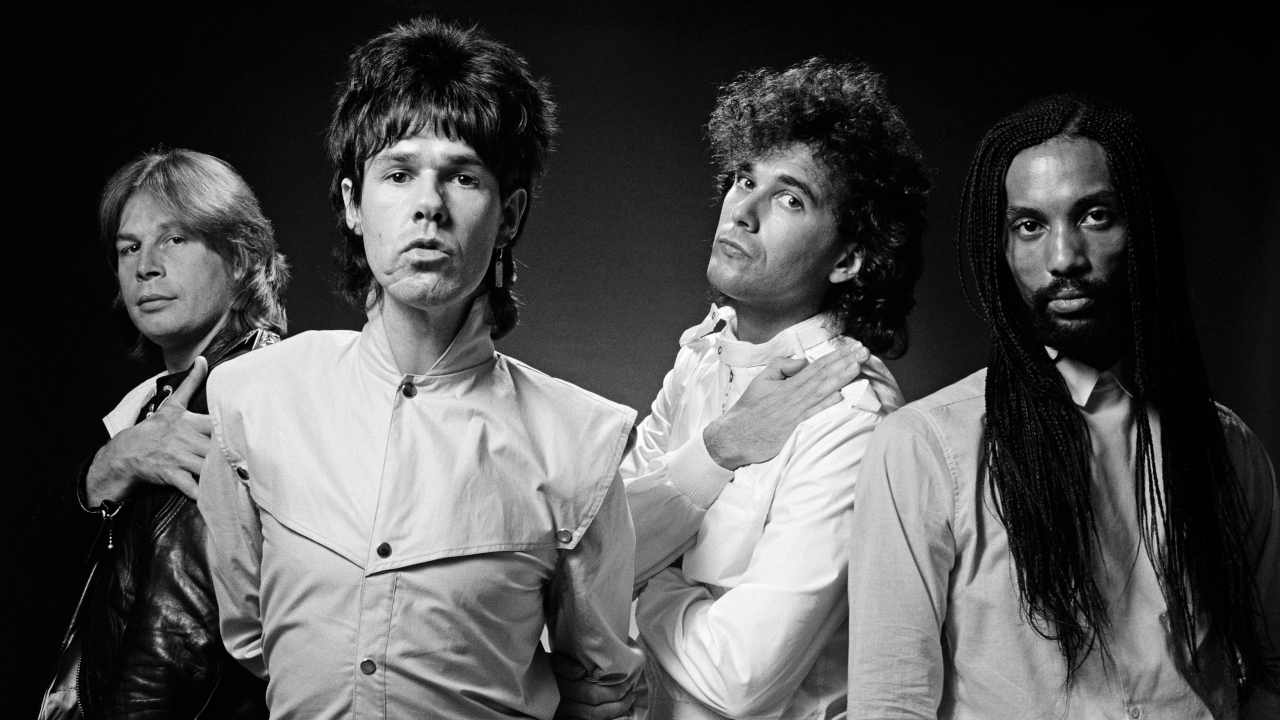
“In America at that time, bands like Journey and REO Speedwagon were all the rage and I suppose this was my version of that,” he admitted. “A gentle song with big power chords.”
It wasn’t a hit, though the album it came from did creep into the UK Top 30, setting the template for Moore’s moderately successful if vaguely underwhelming mid-80s output. No wonder Moore never seemed satisfied with anything whenever you met him in those years. He wasn’t.
“He could be a bit cranky sometimes, let’s put it like that,” says Brian Downey, laughing. “He could be a bit difficult. In the early days in Dublin, he couldn’t wait to get out and have a few drinks with everybody. But he changed over the years. He had a bit of success on the road, an album in the charts, and it kind of changed him a bit. As he got more confident, he got more distant, which I found weird.”
Original Thin Lizzy guitarist Eric Bell – who Moore would replace in 1974, before leaving again six months later – first met his fellow six-stringer when the latter was 11. “He was chubby and people called him Fat Gary,” recalls Bell. “But Christ, he could really play that guitar.”
By the late 80s, Bell was living in London and had revived his friendship with Moore. He recalls several reasons for what he calls “Gary’s dark side”. Foremost were the dreadful scars that ruined his face. “Without a doubt, that had a lot to do with it. He once said to me, ‘Musicians can’t fight.’ But he learned to deal with those situations after what happened to him with his face.”
Bell tells the story of a girlfriend Gary had in the mid-70s. “She used to go out dressed in a schoolgirl outfit, that sort of thing, a real cutie. Gary told me that one night they went out to [North London hangout] Dingwalls, and he and his girlfriend were up at the bar having a drink. These two guys were about ten feet away and started mouthing about Gary’s girlfriend. What they’d like to do to her. So Gary said something to them. And one of the guys just smashed a glass on the bar and stuck it in his face. Just like that.
“It did change him. And a lot of that pent-up anger and emotion would come out in his playing. And it came out in other ways too. It’s must be a hard thing to come back from something like that.”
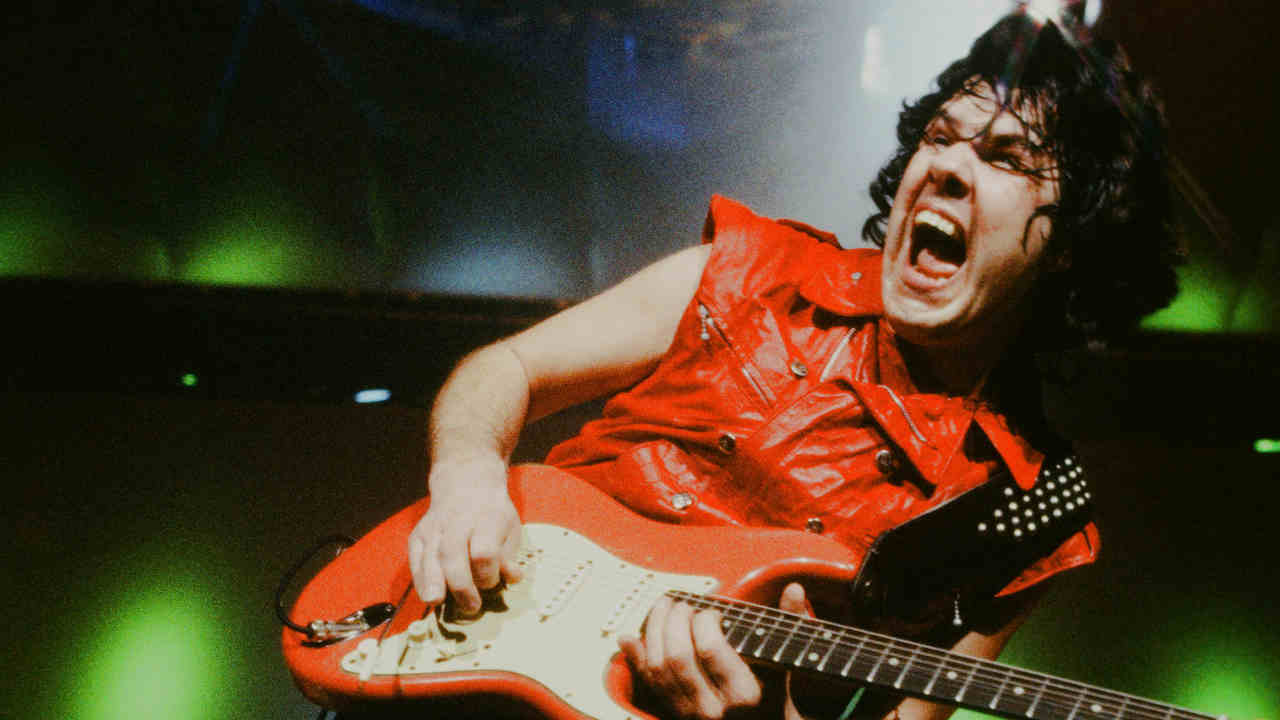
In the 80s, Moore used to look down in pictures in an attempt to hide his scars, or was photographed on his sleeves from a distance. His videos were shot from the right to hide the scarred side of his face.
It wasn’t just his face that was scarred. “If he played a bad gig, it would just completely destroy him,” says Bell. “I saw him play one night at Liberty Hall in Dublin and he was amazing. But when I went to see him in the dressing room afterwards he was sitting in the corner with a big bottle of Mateus Rosé wine, knocking it back. I sat down beside him and said, ‘Fucking great gig, Gary.’ He looked at me. ‘What? Fucking load of shite! I’ve never played so bad in my fucking life!’ I saw that side of him quite a lot.”
It was a dark atmosphere that seemed to overcome the guitarist, especially when he felt crowded in. Bell recalls a night, years later, when the guitarist had organised a Gary Moore & Friends concert in Dublin, to commemorate what would have been the 56th birthday of Phil Lynott.
“There were dressing rooms for everyone but Gary had invited me in to his. There was a knock on the door and about 30 people walked in. Gary said to one of his guys, ‘Hey, get rid of them. Eric’s okay, but get the fucking rest of them out now!’ I couldn’t believe it. These are guys from Dublin that Gary has known for fucking years, along with the other artists on the bill.”
According to Bell, Moore reserved a special contempt for guitarist Brian Robertson – a man whom Moore replaced twice in Thin Lizzy. “When Robbo came in, Gary nearly went fucking mad. He says, ‘Hey, you! Get fucking out!’ There was never any half measure with Gary. Such a nice guy when we were on our own. But if he didn’t like something, he’d soon tell you to fuck off.”
Ironically, for a man who clearly detested compromise, Moore’s solo career in the 80s was defined by the amount of musical shapes he twisted himself into to try to keep the hits coming. Most galling, perhaps, was the fact that his two best-known hits of that period were both done in tandem with Phil Lynott. Having spent years trying to escape the shadow of the Thin Lizzy man’s influence, their reunion on 1985’s Out In The Fields, in which the two of them traded vocals, gave Moore the biggest hit single of his career. Yet even triumph was tinged with tragedy. Lynott’s own career had hit the doldrums, thanks in part to his ever-worsening descent into heroin addiction.
Lynott had a studio in his garage where they made the demos for Out In The Fields. Moore tried working with him there on other things but found the process frustrating. “You couldn’t get him out of bed before two in the afternoon,” he told me. “Then he’d come down with a glass of whiskey and a spliff, one in each hand. We did a few TV shows together, but he wasn’t in good shape. He would drink quite a lot while he was with you. He was just not on top of it at all and it was really sad.”
Moore tried his best to pull his old friend out of his downward descent, but Lynott was beyond help. “Don’t think I didn’t speak to him about it because I did,” the guitarist said. “I’d have a drink with him, telling him how much I loved him and how I really wanted him to stop all this stuff. And he’d be like, ‘Oh yeah, I’m gonna do it but I’m not gonna do it overnight, you know?’ Then next day he’d be back to his old tricks.”
Lynott died in January 1986, of multiple organ failure brought on by his heavy drug abuse. It had a profound impact on Moore. “It changed my way of thinking,” he told me. “In a weird way it spurred me on to finally do my own thing.”
The first album Moore released after Lynott’s death was 1987’s Wild Frontier, his first attempt at a departure from the musical identity he had assumed in the 80s, featuring a blend of Celtic folk roughed up by electric blues and rock. It featured a tribute to his dead friend, Johnny Boy.
“I wrote it just after Phil died,” he explained. “I’d also just gone back to Ireland at that time, so it came out with a very reflective, Celtic Irish flavour. A lot of memories of the early days with Phil and Skid Row. A lot more real to me in many ways.”
But Wild Frontier would prove to be a false dawn. With his next album, After The War, Moore was back to sniffing around passing trends. The album was an undignified pastiche of big-haired metal. Its nadir was the Ozzy Osbourne-fronted Led Clones, a heavy-handed satire on the bands cashing in with their Zeppelin-lite brand of metal. By the end of 1989, though, Moore was just as sick of his own music. He had enough money to never have to work again. What he didn’t have was what he called “musical self‑respect”. That would come with his next album.
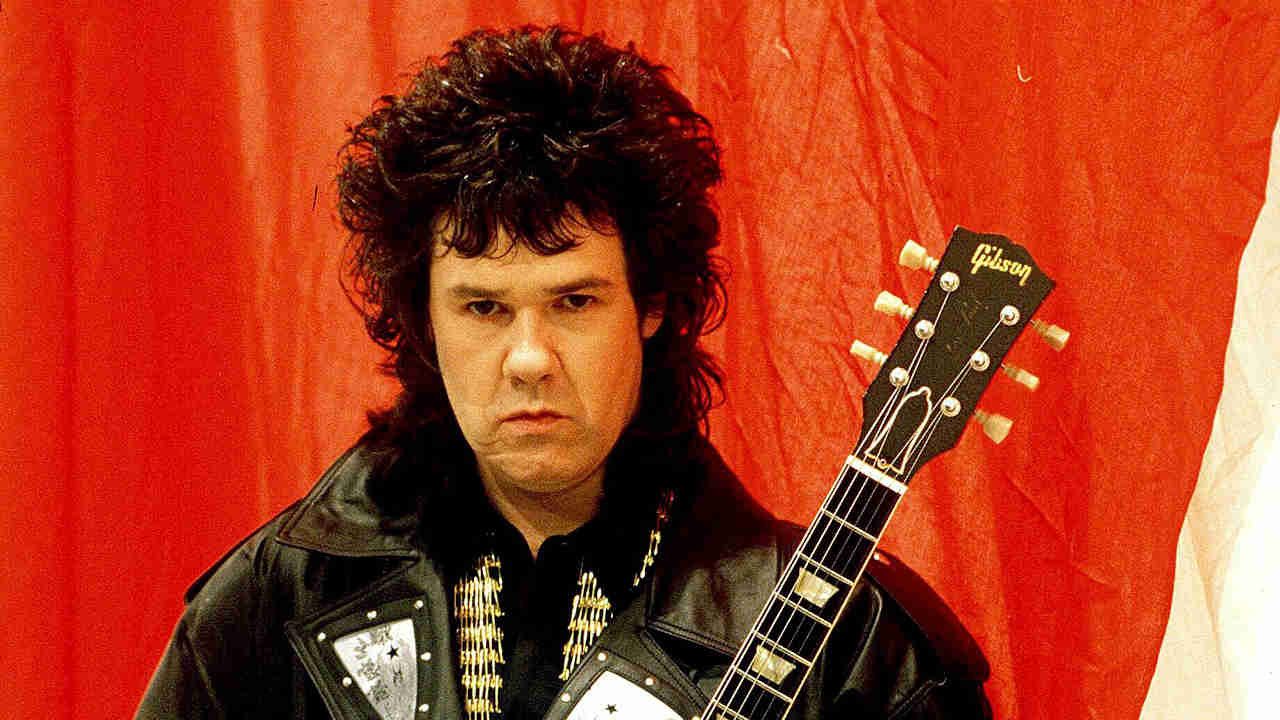
One evening in the autumn of 1989, Eric Bell received a phone call from Moore. “I hadn’t spoken to him for about a year,” remembers Bell. “He said, ‘You know, I was playing some of my albums the other night, from G-Force to some of my own things later on, and it was the biggest load of fucking shite I’ve ever heard! I don’t wanna play like that any more. Widdle, widdle, widdle, up and down the neck as fast as possible. It’s a load of fucking bollocks!’”
Moore asked Bell if he remembered any of the songs they’d played when they shared stages on the blues circuit of Belfast. Bell did, and he listed 10 or 12 titles. “About six months later,” Bell says, “I’m walking through Shepherd’s Bush Mall and there’s this billboard with a life-size poster of Gary in a suit, saying, Still Got The Blues – New Album Out Now. And I just stopped and looked at it. I couldn’t believe it. I thought, ‘Fuck me, he’s actually gone and done it!’”
Moore’s old Thin Lizzy bandmate Brian Downey played on four tracks on Still Got The Blues. He says: “I kind of knew this was going to be his masterpiece and that he had a couple of good songs up his sleeve. But when I went in and he played me back what he’d already done, I was completely gobsmacked. They were great! Really good, authentic blues songs. It made me a little bit nervous. I wasn’t expecting something as high‑standard as that.”
In the mid-80s, an Armani-suited Eric Clapton had reinvented the blues for a new and far more affluent audience, and Moore’s critics suggested he was jumping on that bandwagon. But Downey suggests the guitarist’s mid-80s albums were the ones where the guitarist was chasing trends. “Blues was always his first love, from when we were kids,” he says. “He had a great blues repertoire. He could pick them out of the air.”
Don Airey, who played on the album and in the touring band, says Moore had finally found himself after years of searching. “I thought, ‘My god, he’s finally found what he wants to do. I think he found rock rather constraining, the whole image thing that was going on in the 80s. The formula and the big hair, which he’d tried to do. But when we did Still Got The Blues, all he did was just play. He played and played and played. There are 47 reels of tape somewhere that didn’t make the album, with the most amazing guitar playing on it. Everything was live and we’d just do different takes, and he never seemed to play the same thing twice.”
His shows were eye-opening. “We used to have all these young couples in the front row,” says Airey. “On the song Still Got The Blues, Gary would be doing this amazing solo, heart-rending, and you’d just see a guy turn to his girlfriend and ask her to marry him. You could see what had happened because all of the people around them would start hugging them. We saw that happen five or six times.”
And then there was the ‘look’. Still Got The Blues found Moore slipping into a smart blue suit. He explained: “The only reason I put a suit on back when I did Still Got The Blues is because I wanted to send out a very clear message to rock fans that what I was doing now wasn’t necessarily something they were going to like. And also as a signal to people that might not have liked anything I’d done in the past that, again, this was something else, something new. I wanted to start with a clean slate and the suit seemed like a good way of getting that message across.”
Still Got The Blues was released in March 1990, and featured contributions from Albert King, Albert Collins and George Harrison. As well as a triumphant artistic reinvention, it was a critical success, giving Moore a Top 15 album for the first time since the mid-80s, and it was his most successful record in the US.
“People ask me, ‘Where do the blues go next?’” Moore said. “I always answer, ‘They’ve already been everywhere, all round the world a million times.’ The point is where the blues takes you next. It’s always been there, and continues to be all these years later, which is what makes it such an important form of music. For me, it’s not so much a case of ‘still got the blues’ any more as that the blues has still got me.”
